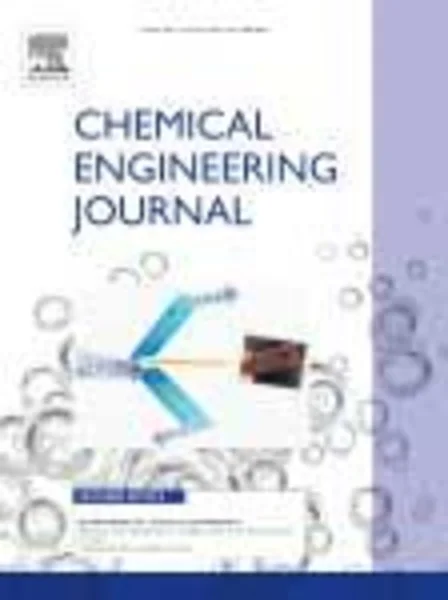-
sonochemical degradation of estradiols: incidence of ultrasonic frequency
جزئیات بیشتر مقاله- تاریخ ارائه: 1392/01/01
- تاریخ انتشار در تی پی بین: 1392/01/01
- تعداد بازدید: 774
- تعداد پرسش و پاسخ ها: 0
- شماره تماس دبیرخانه رویداد: -
this paper presents an experimental study of the ultrasonic degradation of organic pollutants in terms of the effect of ultrasonic frequency (40–380–850–1000 khz). the removal efficiency of two endocrine disrupting compounds [17β-estradiol (e2) and 17α-ethinylestradiol (ee2)] is investigated using laboratory scale ultrasonic baths at low power intensities. higher ultrasonic frequencies were found to be more effective for pollutant degradation with 850 khz the best: 9.0 × 10−1 mg/kw h for e2 and 6.8 × 10−1 mg/kw h for ee2 at initial concentrations of 1 ppm. additionally, the removal of p-nitrophenol was investigated under the same conditions, as a dosimetry reaction for estimating the hydroxyl radical production, key component in organic pollutant removal. in order to describe the overall phenomena occurring inside the reactor and to predict the apparent hydroxyl radical production, a simulation algorithm is proposed. it incorporates the solution of ode systems that embodies bubble dynamics, heat and mass transfer through the bubble wall and chemical reactions in the gas–vapor phase for an initial bubble nuclei population. the experimental degradation measures of p-nitrophenol over the range of frequencies studied were found to be comparable with the model results of hydroxyl radicals produced during the sonication treatment.
مقالات جدیدترین رویدادها
-
استفاده از تحلیل اهمیت-عملکرد در ارائه الگوی مدیریت خلاقیت سازمانی و ارائه راهکار جهت بهبود
-
بررسی تاثیر ارزش وجوه نقد مازاد بر ساختار سرمایه شرکت های پذیرفته شده در بورس اوراق بهادار تهران
-
بررسی تأثیر سطح افشای ریسک بر قرارداد بدهی شرکت های پذیرفته شده در بورس اوراق بهادار تهران
-
بررسی تأثیر رتبه بندی اعتباری مبتنی بر مدل امتیاز بازار نوظهور بر نقد شوندگی سهام با تأکید بر خصوصی سازی شرکت ها
-
تأثیر آمیخته بازاریابی پوشاک ایرانی بر تصویر ذهنی مشتری پوشاک ایرانی (هاکوپیان)
-
critic on typology of ceiling of amir inn and arch in tabriz bazaar & complex shaking resistance evaluation
-
تعیین ارزش زمان سفر با استفاده از روش ترجیحات بیان شده مطالعه موردی: شهر تهران
-
بررسی مؤلفه های تأثیر گذار در تحلیل هویت شهری
-
گزارش یک مورد سندرم آلبرایت
-
مقایسه مفهوم ارتباط درون و بیرون در ایران و جهان از دیدگاه کریستیان نوربرگ شولتز
مقالات جدیدترین ژورنال ها
-
مدیریت و بررسی افسردگی دانش آموزان دختر مقطع متوسطه دوم در دروان کرونا در شهرستان دزفول
-
مدیریت و بررسی خرد سیاسی در اندیشه ی فردوسی در ادب ایران
-
واکاوی و مدیریت توصیفی قلمدان(جاکلیدی)ضریح در موزه آستان قدس رضوی
-
بررسی تاثیر خلاقیت، دانش و انگیزه کارکنان بر پیشنهادات نوآورانه کارکنان ( مورد مطالعه: هتل های 3 و 4 ستاره استان کرمان)
-
بررسی تاثیر کیفیت سیستم های اطلاعاتی بر تصمیم گیری موفق در شرکتهای تولیدی استان اصفهان (مورد مطالعه: مدیران شرکتهای تولیدی استان اصفهان)
-
روانشناسی قانونی: ضرورتی در نظام عدالت کیفری ایران
-
تدوین مدل معادلات ساختاری اهمال کاری بر اساس سرمایه روان شناختی (امید، خوش بینی، تاب آوری و خودکارآمدی) با اثر تعدیل کنندگی تفکر انتقادی
-
بررسی رابطه بین سبکهای مدیریت مدیران با سلامت سازمانی و عملکرد شغلی کارکنان (اداره کل بنادر و دریانوردی استان خوزستان منطقه ویژه بندر امام خمینی)
-
بررسی اصل عدم با اصل استصحاب
-
تاثیر ویژگی مدیریتی ( خودشیفتگی، توانایی مدیر ) بر کنترل حسابرسی داخلی با تاکید بر نقش سیستم های حسابداری مدیریت




سوال خود را در مورد این مقاله مطرح نمایید :